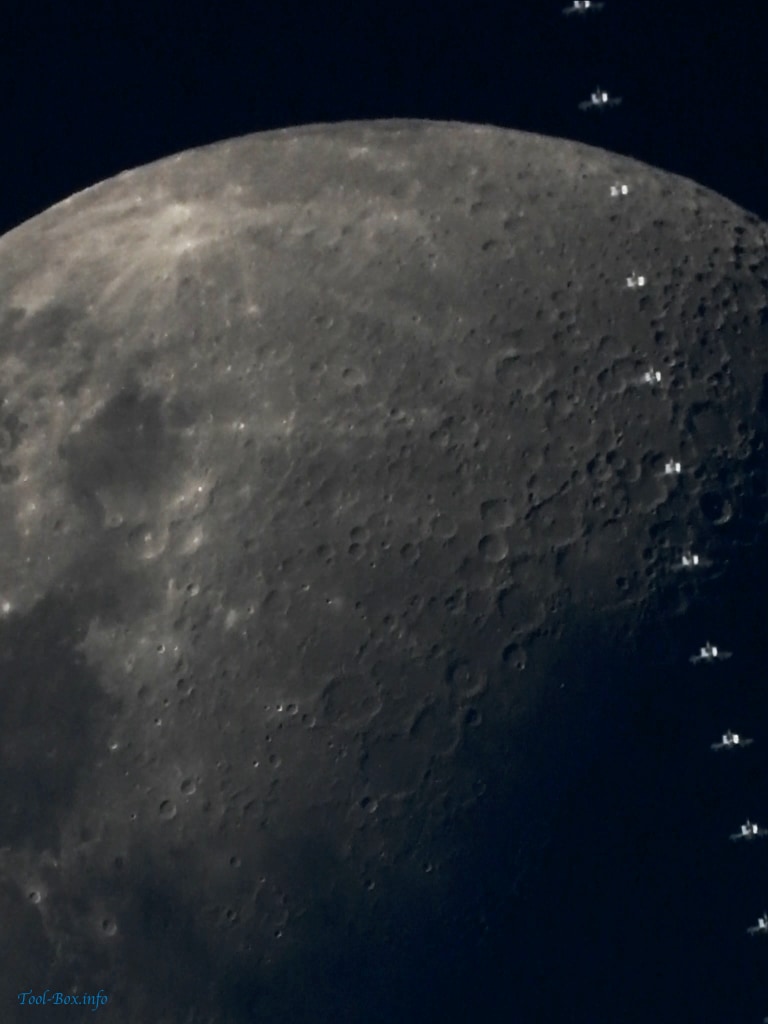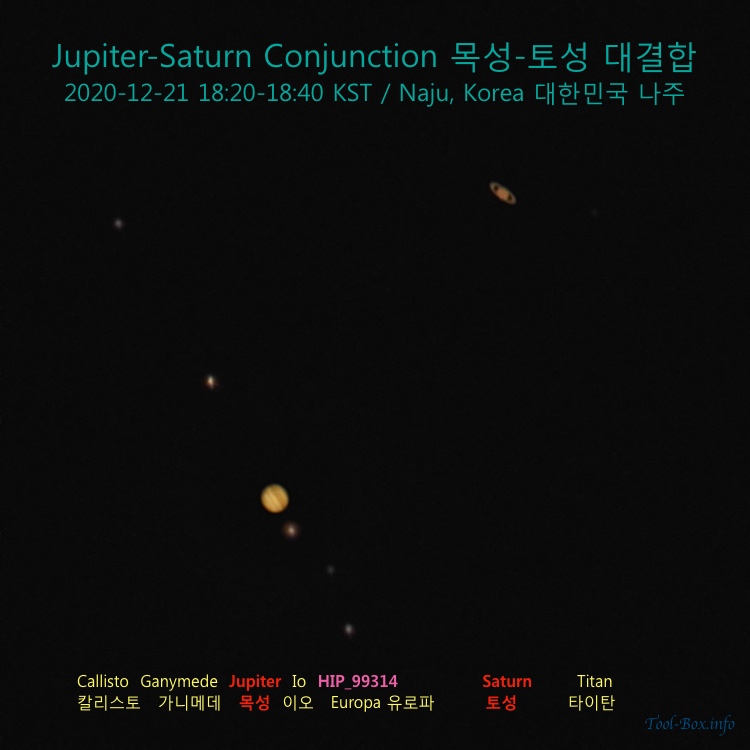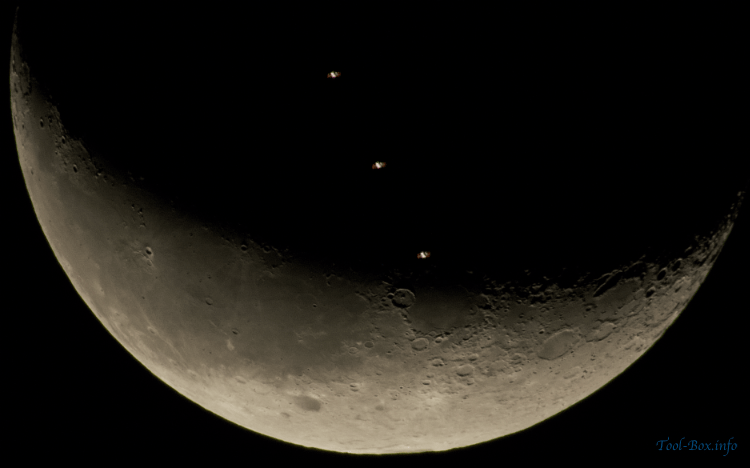Entries tagged as astronomy
camera Moon Sanyo VPC-C4 satellite Minolta Dimage X20 binoculars Chuseok telescope eclipse Kodak Z1085 IS star Sun iPhone 4 A1533 iPhone 5S slow motion A1530 LTE iOS iPhone 4S sound Celine Chung electric fan LED light trail M&M's A1524 iPhone 6 Plus OIS Cortex Camera Focus Pixels A1522 A1549 A1586 barometer belt case iOS 8 iPad iPad mini iPhone 3GS iPhone 5 iPhone 5C iPhone 6 KT LGU+ Canon SX50 HS ISS Canon EOS 450D planet Venus Alhena constellation Iridium Jupiter Orion Mars China Korea lunar calendar Bushnell 8x40 fog Naju iPhone 7 Plus Bitgaram City Sony A5000 beach firework Ulsan Nikon CoolPix P1000 almond nuts walnut flare MetOp-A Ursa Minor KPX Celestron NexStar 6SE Snapzoom asteroid Josephina Neptune Triton Saturn teleconverter duck Hayun Chung river Sung-Eun Kim Yeongsan cafeteria ice persimmon Korean dress rice cake beverage chocolate HT-Mini v2 toy dwarf planet Pluto Jeonnam Science Festival Messier 11 Messier 2 adapter iPhone 6S Plus artificial star collimation Andromeda focal reducer galaxy iPhone 11 Pro Singapore travel Uranus Hiroshima iPhone 16 Pro Japan Lyra airplane Boötes Leo Minor Ursa Major Bode's Galaxy Cigar Galaxy iOptron SkyTracker Ceres Heze Vesta Zeta Virginis C/2014 Q2 Lovejoy comet nebula Taurus road shade cat assembly kit car cup Starbucks Bolt EV electric SpaceX electric vehicle Sight Knight visor Jeonju iPhone 13 Pro Gunsan space station Tiangong 3DMark Geekbench Octane SunSpider Touch ID battery PeaceKeeper charger box iPhone 6+ iPhone 7 Raynox DCR-1540PRO Vivitar 2.0X lightning C/2013 R1 Lovejoy CHDK Nikon D3300 Samyang Polar 800mm Toast TP-2 Milky Way iPhone X meteor shower Perseids Scorpius cable magnet Micro-USB USB Apple Watch Bluetooth GPS pen dock earphone speaker rain satellite TV shower television water apple Seoul shopping Yongsan iOS 13 memory MicroSD storage card reader mouse electricity Goheung Naro Space Center Dragon expressway parking lot service area Boeing Daejeon international spacecraft AT&T SK Telecom fingerprint sensor M7 pedometer Kraken performance accelerometer compass gyroscope Han-gang passcode Kiwi Fotos KF-8012N smog COEX Samseong skyline subway contamination Heathrow Airport London Wesley Woo-Duk Hwang-Chung anchovy snack airport Gimpo Lotte World Seoul National University kids cafe Lego Petit Monde instant noodles ramyeon Africa Benin gas station toll gate game Korean Air cloud Asiana Airlines Coca Cola emergency soda Tokyo building Bode’s Galaxy Sombrero Galaxy light fixture iPhone XS Christmas tree decoration balls lights sled snow screwdriver table cookie milk Oreo Homeplus pizza chocolate chip cookies couch FaceTime New Year's Day Skype tteokguk computer swing Toys R Us trampoline Mega Kids Box Megabox movie theatre tortilla wrap toothbrush salad Disney Frozen remote controlled helicopter repair replacement Syma S107G Danish butter cookies animation Larva shopping cart ball bed globe headphones pink breakfast rice porridge Lunar New Year traditional Korean dress Hyung-Bae Kim kite sausage Cloud Cuckoo Palace Princess Unikitty The Lego Movie Evil Robot playground slide dinosaur InoQ Tyrannosaurus 3D printing hot-end Makibox squirrel bunny balloon Jenga 123D Design Autodesk coin Electric Love Marathon heart Tayo Christmas Octonauts play set present apple tree Financial Museum Kwangju Bank vegetable Pop Up Pirate Anna Elsa Gwangju princess
Seeing a spacecraft docking with ISS from Earth
Posted by Wesley on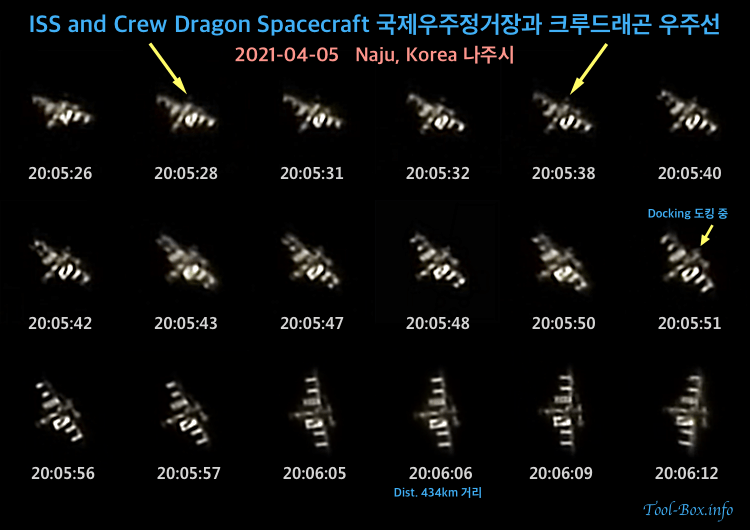
With clear skies yesterday evening, it was a perfect time to watch the International Space Station make a pass near zenith. Like last month, I set my P1000 camera to video mode while I tracked manually. When I reviewed the recording, I was happy to see that the frames were mostly in focus. The quality was actually one of the best I got with the camera, with most of the modules easily distinguishable. But then I noticed a faint dot next to the station in much of the frames, so I looked up the news.
It turned out that the SpaceX Crew Dragon spacecraft was moving from one docking port to another during those moments. The move only took 39 minutes from undocking (19:31:02) to soft capture (20:10:12), so it was out of sheer coincidence and luck that I was recording while spacecraft was near, but not docked to the space station. The fact that the Crew Dragon's was just big enough to show up in the frames helped, too. The 109-meter ISS was 83 pixels wide at the closest approach, so the Dragon being 4 meters in diameter appeared as a 3-pixel dot. In any case, I was pleasantly surprised to find out that I photographed this occasion. It was something I had on my bucket list.
Device: Nikon P1000
Settings: 3000mm - ISO 200 - 1/1000s - f/8
Filters: None
Time: 2021-04-05 20:05:26-20:06:12 KST
Location: Naju, Korea
432 video frames processed with PIPP 2.5.9, RegiStax 6.1.0.8, and Pixelmator Pro 2.0
ISS brushing past afternoon Moon
Posted by Wesley onWhile the Sun is up in the sky, the Moon is still visible at the right phases due to its brightness. Although the Int'l Space Station can also become bright, it's only visible shortly before to about an hour after sunset. So when I found out that it was to pass in front of the Moon while the sky was fairly bright (36 minutes before sunset), I wasn't sure of the results. Would it look brighter or darker than the Moon? Would it even be visible when it's not in front of the Moon?
These questions were cleared up when I got the Moon at that moment on video. Because of the uncertainties and the quickness of the pass, I used 4k 30fps recording instead of the usual 7-frame burst mode on the P1000 camera. The prediction calculation was slightly off and the ISS was not centered, but I still managed to get more than 10 useful frames. The fuzziness is due to video compression, but it's far better than nothing. Interestingly enough, the radiators on the space station were quite a bit brighter than the surface of the Moon in general.
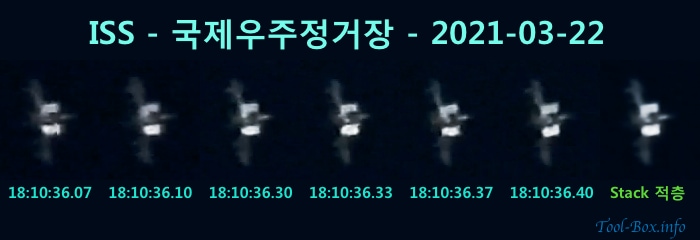
When we take a closer look, the prominent features of the ISS are easily discernible. The solar panels are stretching from top to bottom, while the Russian modules Zvezda (right) and Zarya (center) are more illuminated than the multi-national modules on the left. Considering this success, it looks like I should try the video recording again for the next ISS pass.
Device: Nikon P1000
Settings: 3000mm - ISO 400 - 1/1000s - f/8
Filters: None
Time: 2021-03-22 18:10:36 KST
Location: Buan, Korea
12 video frames processed with Pixelmator Pro 2.0
Jupiter-Saturn Conjunction of 2020
Posted by Wesley onJupiter and Saturn appeared closest to each other in nearly 400 years on the Winter Solstice of 2020. For this Great Conjunction, the two planets were only about 6 arc seconds apart, which meant that I was easily able to take a photo of both in a single frame as you can see here. Some had expected that they might appear as a single dot, but it turned out that Saturn was discernible as a fainter "bump" on the top right side of Jupiter to the naked eyes.
To show the planets and the satellites together, I used varied exposures and then combined the results into a single photo. Titan was the dimmest that I could photograph, and it appears very faintly to the right of Saturn. Interestingly, a star named HIP 99314 was also caught in action between Io and Europa, which means that this conjunction was actually a triple affair.
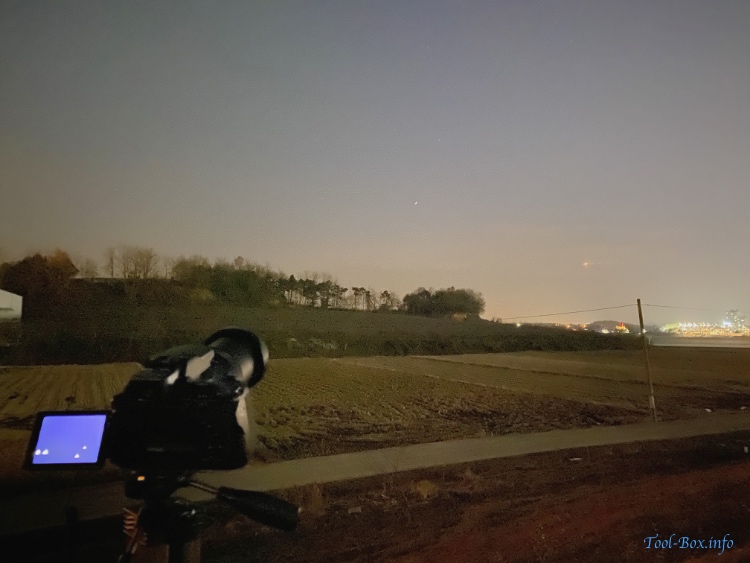
By the way, I was worried that I wouldn't be able to see the phenomenon in person because it was pretty cloudy throughout the day. Luckily, most of them went away as the Sun set and I was able to take the photos for about an hour until the low-hanging clouds started to block the view. The next closest conjunction happens 60 years later and I'm not sure if I'd be around to see that, so I was glad that the weather decided to cooperate in the last minute.
Device: Nikon P1000
Settings: 3000mm - f/8
- Jupiter: 24 photos, ISO 200, 1/30s
- Saturn: 13 photos, ISO 400, 1/30s
- Satellites: 17 photos, ISO 800, 1/5s
Filters: None
Time: 2020-12-21 18:20-18:40 KST
Location: Naju, Korea
Photos processed with PIPP 2.5.9, RegiStax 6.1.0.8 and Pixelmator Pro 2.0
Illuminated ISS crossing waning Moon
Posted by Wesley onThe International Space Station is usually in the Earth's shadow when it makes a pass in front of the Moon. But when the conditions are just right, you can see both illuminated by the Sun just like the photo I took above. When seen with the naked eyes, it looked as if a bright meteor was darting across the sky towards the Moon and eventually pass right through it. To witness this, I drove about 40km northeast to the edge of Damyang in the early morning.
Device: Nikon P1000
Settings: 3000mm - ISO 400 - 1/500s - f/8
Filters: None
Time: 2020-11-11 05:36:43 KST
Location: Damyang, Korea
6 photos processed with RegiStax 6.1.0.8 and Pixelmator Pro 1.8

